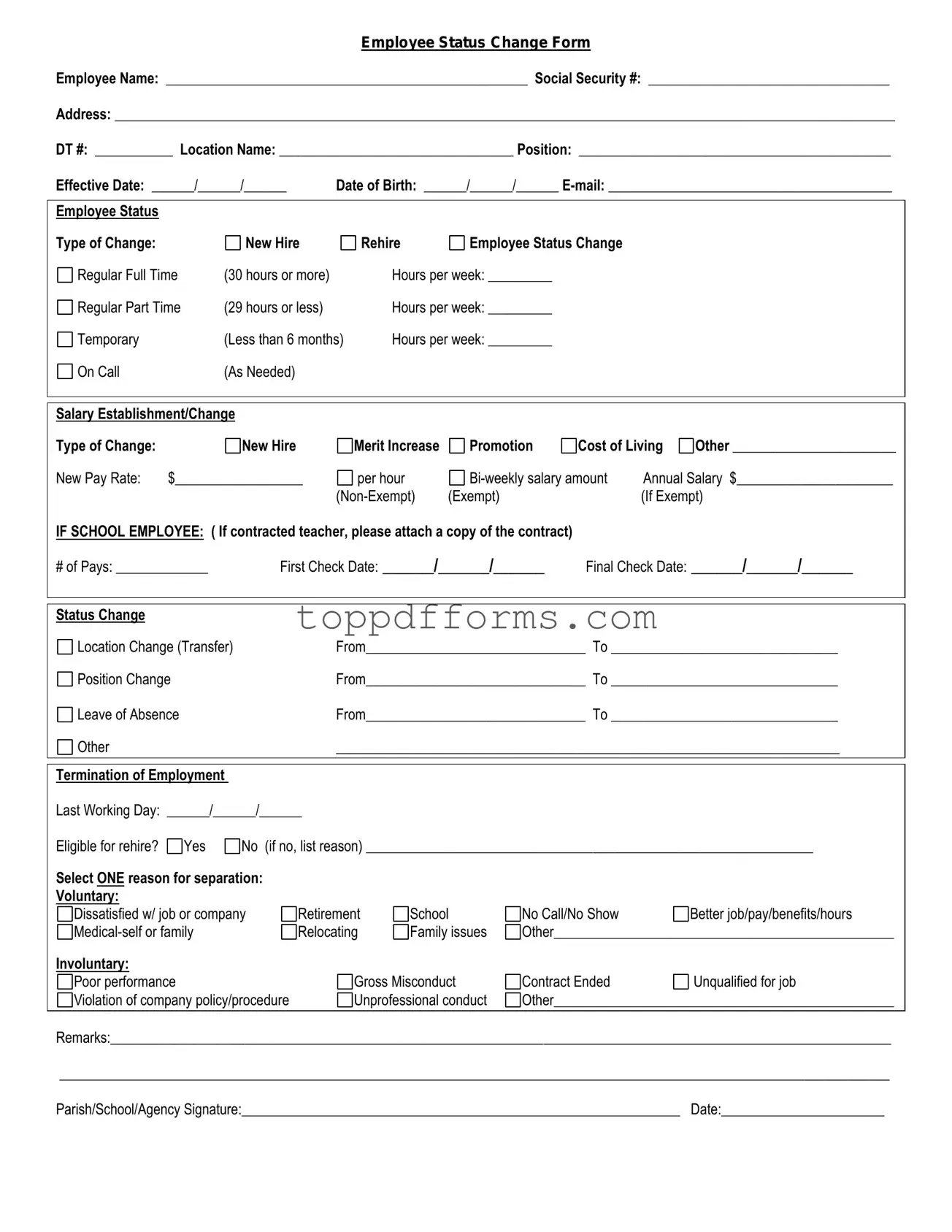What is the Employee Status Change form?
The Employee Status Change form is a document used to formally record any changes in an employee's status within the organization. This can include changes such as promotions, demotions, transfers, or changes in employment status (e.g., full-time to part-time). It ensures that all personnel records are updated accurately and promptly.
Who needs to fill out the Employee Status Change form?
The form must be completed by the employee's supervisor or manager. In some cases, the employee may also be required to provide input or sign the form to acknowledge the changes being made. This collaborative approach helps maintain clarity and ensures all parties are informed.
When should the form be submitted?
The form should be submitted as soon as a change in status is decided. Timely submission is crucial for updating payroll, benefits, and other HR records. Delays can lead to issues with compensation and employee benefits.
What information is required on the form?
The form typically requires basic information such as the employee's name, employee ID, current job title, and the new job title or status. Additionally, it may ask for the effective date of the change and any relevant notes or justifications for the change.
How is the form submitted?
What happens after the form is submitted?
Once submitted, the HR department will review the form for accuracy and completeness. They will then update the employee's records accordingly. Employees and managers may receive confirmation once the changes have been processed.
Can I make changes to the form after submission?
Changes to the form after submission may be possible but typically require additional documentation or a new form. It is best to contact HR directly to discuss the need for any modifications and follow their guidance.
Is there a deadline for submitting the form?
While there may not be a strict deadline, it is advisable to submit the form as soon as the change is finalized. This helps avoid disruptions in payroll and benefits administration. Consult your HR policies for any specific timelines that may apply.
What if I have questions about filling out the form?
If you have questions about the Employee Status Change form, reach out to your HR representative for assistance. They can provide guidance on how to fill out the form correctly and ensure that all necessary information is included.
Where can I find the Employee Status Change form?
The form is typically available on the company's intranet or HR portal. If you cannot locate it, contact your HR department for assistance in obtaining the form.
